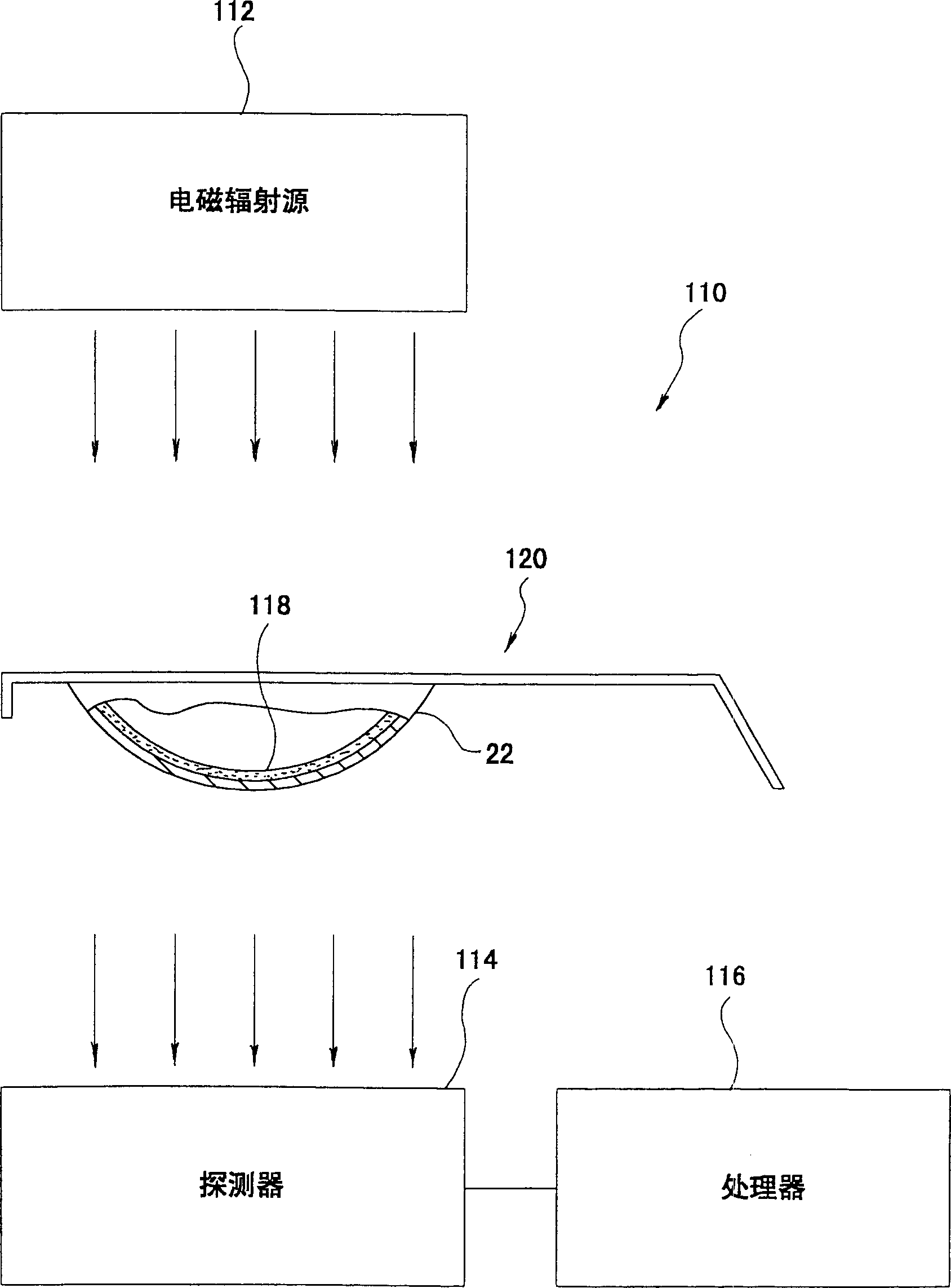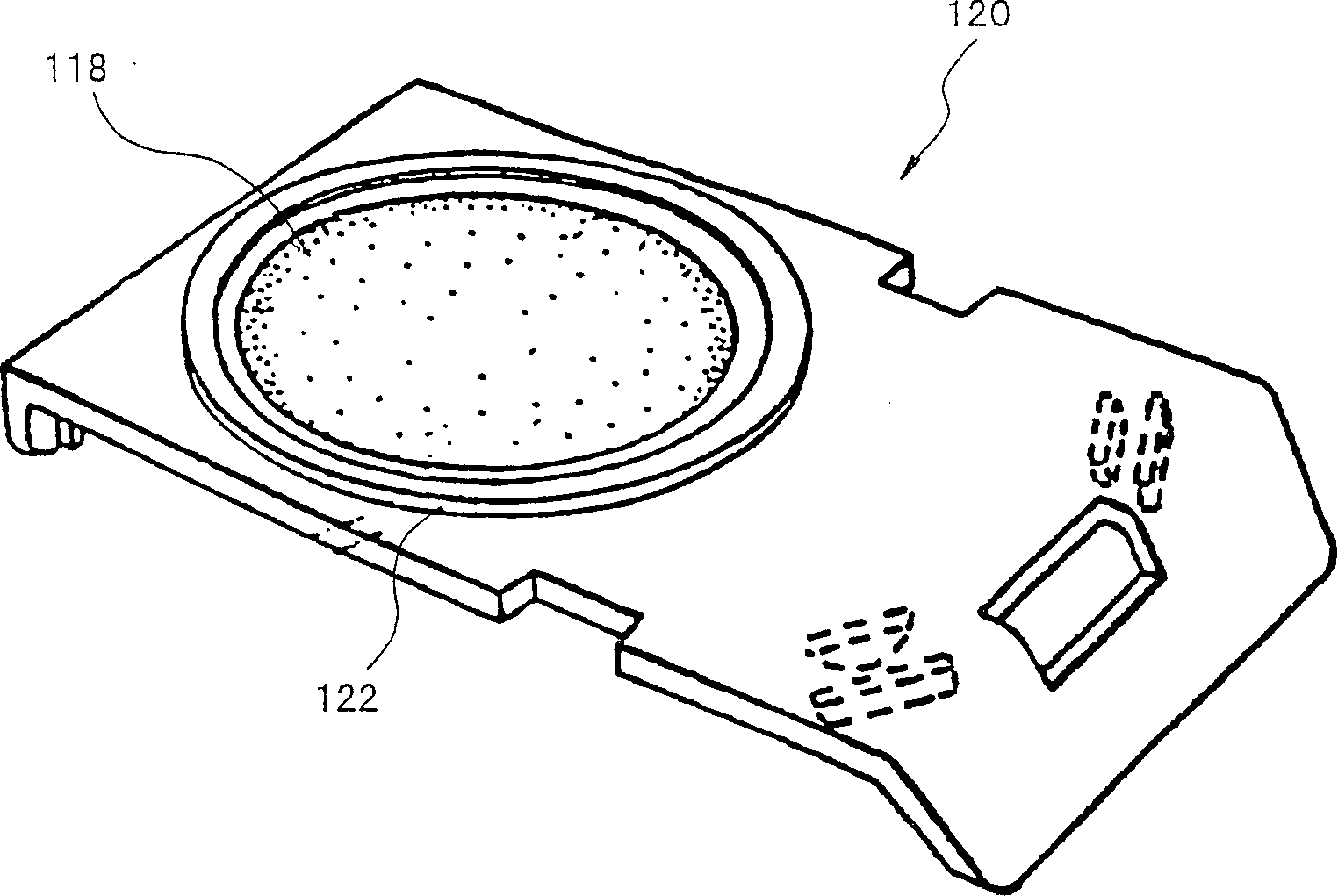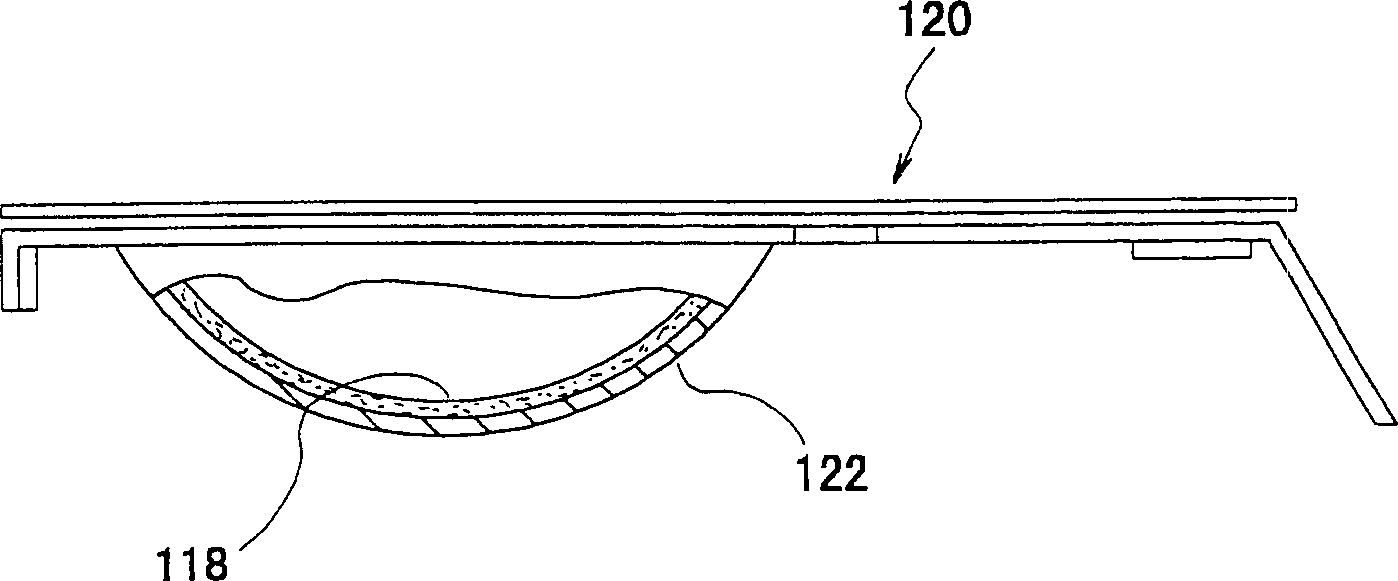Detecting system and method for lack of lens
A lens and detector technology, applied in the field of lack of lens detection system and method, can solve the problems of effective software and high cost, etc.
- Summary
- Abstract
- Description
- Claims
- Application Information
AI Technical Summary
Problems solved by technology
Method used
Image
Examples
Embodiment Construction
[0037] The term "holder" as used herein refers to a support container for a lens. Generally, the support is a blister component composed of a base (such as a bowl) and a cover (such as a lidstock). The cover can be, for example, a transparent plastic cover or foil-coated plastic. The term "support" here also denotes a base body without a cover.
[0038] figure 1 The lack of lens detection means is shown in , which means is indicated by reference numeral 110 . The detection device 110 includes an electromagnetic radiation source 112 , a detector 114 and a processor 116 . Radiation source 112 may be a broadband radiation source that emits ultraviolet, visible and infrared light. For example, a visible light source like the Phillips photothermal bulb P / NPL-S9W / 10 emits electromagnetic radiation in the ultraviolet band. Alternatively, the radiation source 112 may generate electromagnetic radiation in a narrow frequency band, or the radiation source 112 may be combined with a ...
PUM
| Property | Measurement | Unit |
|---|---|---|
| wavelength | aaaaa | aaaaa |
Abstract
Description
Claims
Application Information
 Login to View More
Login to View More - R&D
- Intellectual Property
- Life Sciences
- Materials
- Tech Scout
- Unparalleled Data Quality
- Higher Quality Content
- 60% Fewer Hallucinations
Browse by: Latest US Patents, China's latest patents, Technical Efficacy Thesaurus, Application Domain, Technology Topic, Popular Technical Reports.
© 2025 PatSnap. All rights reserved.Legal|Privacy policy|Modern Slavery Act Transparency Statement|Sitemap|About US| Contact US: help@patsnap.com



